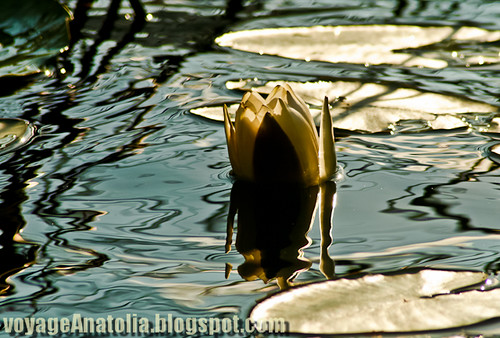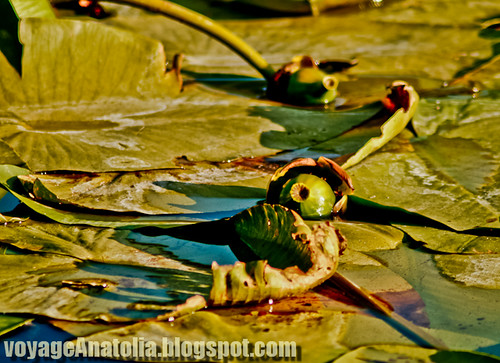
The nymphs were supernatural feminine beings associated with springs, always in the shape of young nubile maidens, frequent target of satyrs...
Nymphaea is a genus of aquatic plants in the family Nymphaeaceae. There are about 50 species in the genus, which has a cosmopolitan distribution. The common name, shared with some other genera in the same family, is Water Lily.
The name Nymphaea comes from the Greek term "nymph". The nymphs in Greek mythology were supernatural feminine beings associated with springs, always in the shape of young nubile maidens. So the application of the name to delicately flowered aquatic plants is understandable.
Nymphs were the frequent target of satyrs. They live in mountains and groves, by springs and rivers, also in trees and in valleys and cool grottoes. They are frequently associated with the superior divinities: the huntress Artemis; the prophetic Apollo; the reveller and god of wine, Dionysus; and rustic gods such as Pan and Hermes.
Nymphs are personifications of the creative and fostering activities of nature, most often identified with the life-giving outflow of springs: as Walter Burkert remarks, "The idea that rivers are gods and springs divine nymphs is deeply rooted not only in poetry but in belief and ritual; the worship of these deities is limited only by the fact that they are inseparably identified with a specific locality."